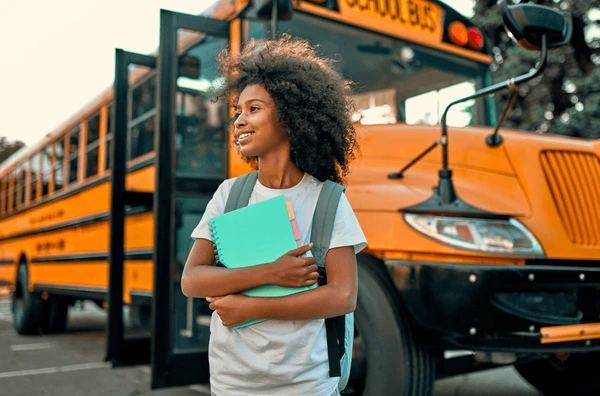In today’s fast-paced information landscape, the headlines we encounter daily play a pivotal role in shaping students’ understanding of the world. The way news is presented can significantly influence their perceptions, beliefs, and knowledge about global events and social issues. This article delves into the impact of study headlines on student understanding, the importance of media literacy, and strategies for educators to foster critical engagement with news.
The Impact of Study Headlines on Understanding

1. Framing of Information
Study headlines often frame the narrative around specific topics, influencing how students interpret the information. Key aspects include:
- Highlighting Specific Issues: Headlines that focus on particular aspects of a story can shape students’ perceptions. For example, a headline emphasizing violence in a region may lead to a skewed understanding of the area, overshadowing positive developments.
- Language and Tone: The choice of words in headlines can evoke emotions and set the tone for how students engage with the content. Sensationalized or biased headlines may lead to misconceptions or fear.
2. Creating Awareness of Current Events
Study headlines serve as gateways to current events, providing students with essential information about the world around them. This awareness can lead to:
- Contextual Understanding: Exposure to diverse headlines allows students to connect classroom learning with real-world events, enhancing their contextual understanding of subjects like history, politics, and science.
- Cultural Sensitivity: Coverage of international news broadens students’ perspectives, promoting empathy and understanding of different cultures and social issues.
3. Shaping Opinions and Attitudes
The headlines students read can significantly influence their opinions and attitudes toward various issues. This influence manifests in several ways:
- Opinion Formation: Repeated exposure to certain narratives can lead students to adopt specific viewpoints, which may not always be based on comprehensive understanding or critical analysis.
- Encouraging Engagement: Headlines that highlight social justice issues or environmental concerns can inspire students to become more engaged and active in advocating for change.
The Importance of Media Literacy
1. Navigating Information Sources
Media literacy is crucial for students to effectively navigate the vast array of information available to them. Essential components include:
- Identifying Bias: Teaching students to recognize bias in study headlines helps them critically evaluate the information presented. Understanding the difference between news reports and opinion pieces is vital.
- Evaluating Credibility: Encouraging students to assess the credibility of sources fosters responsible consumption of news. They should learn to differentiate between reliable journalism and misinformation.
2. Developing Critical Thinking Skills
Media literacy promotes critical thinking, enabling students to analyze and interpret information effectively. Strategies include:
- Headline Analysis: Students can practice analyzing headlines to determine what information is emphasized and what may be omitted. This exercise encourages them to think critically about the intent behind news stories.
- Discussion and Debate: Facilitating discussions on current events allows students to express their opinions, consider opposing viewpoints, and engage in respectful dialogue.
3. Responsible Sharing of Information
In an era of social media, teaching students to share news responsibly is essential. This includes:
- Fact-Checking: Encouraging students to fact-check information before sharing it helps combat the spread of misinformation and promotes responsible online behavior.
- Understanding Impact: Discussing the potential consequences of sharing news—both positive and negative—can help students become more mindful of their online presence and the information they disseminate.
Strategies for Educators
1. Integrating Current Events into Lessons
Educators can enhance students’ understanding of the world by integrating current events into their curriculum. Strategies include:
- Thematic Units: Develop thematic units that connect study headlines to subject areas, such as history or social studies. This approach helps students see the relevance of news to their studies.
- News Journals: Encourage students to maintain news journals where they summarize articles, reflect on their implications, and connect them to classroom discussions.
2. Utilizing Multimedia Resources
Incorporating multimedia resources can make news more engaging for students. Options include:
- Podcasts and Videos: Utilize news podcasts or video segments to present current events in an accessible format. Visual and auditory elements can enhance understanding and retention.
- Interactive Platforms: Leverage interactive platforms that allow students to explore study headlines, engage in discussions, and participate in polls or surveys related to current events.
3. Fostering a Culture of Inquiry
Creating a classroom culture that values inquiry and discussion can empower students to engage with news critically. Techniques include:
- Open-Ended Questions: Pose open-ended questions about current events to stimulate discussion and encourage diverse viewpoints. This approach fosters critical thinking and reflection.
- Student-Led Discussions: Allow students to lead discussions on news topics that interest them. This empowers them to take ownership of their learning and develop leadership skills.
Conclusion
Study headlines play a significant role in shaping student understanding of the world, influencing their opinions, attitudes, and values. In an era of information overload, fostering media literacy and critical thinking skills is essential for students to navigate the complexities of inca berita consumption. By integrating current events into the curriculum and promoting responsible sharing, educators can empower students to become informed, engaged citizens.
As students develop their understanding of global issues through study headlines, they are better equipped to participate in society, advocate for change, and contribute positively to their communities. By prioritizing media literacy and critical engagement with news, we can help shape a generation of thoughtful, informed individuals ready to tackle the challenges of the future.
Read also about Rendang to dive into the rich flavors, cultural heritage, and slow-cooked mastery behind one of Indonesia’s most iconic and beloved dishes


